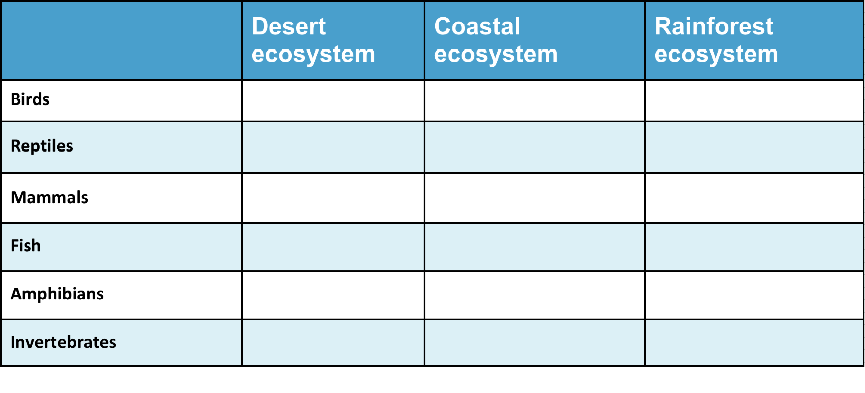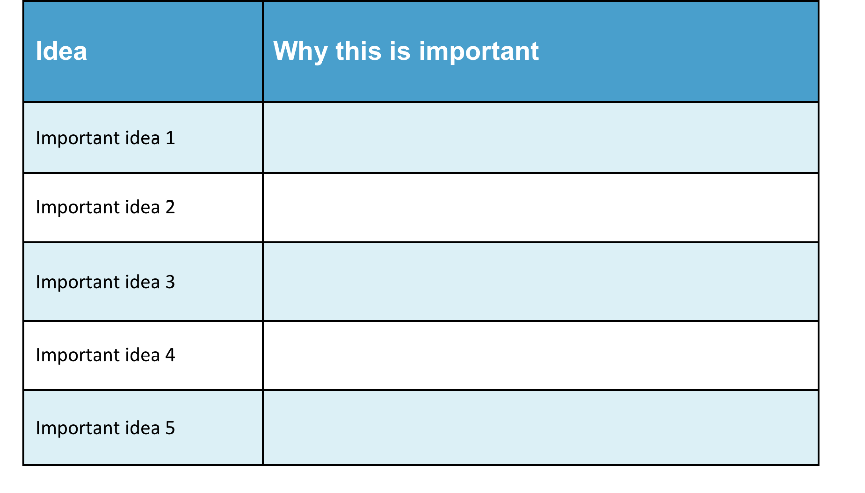Information for Teachers
Curriculum links
Australian Science Standards
BS (ACSSU73) Living things depend on each other and the environment to survive
BS (ACSSU73) Plants provide shelter for animals
BS (ACSSU73) Roles of producers, consumers and decomposers in a habitat
New Zealand Science Achievement Objectives
LW: The interdependence of living things in an ecosystem
LW: The key structural features and functions involved in the life processes of plants and animals
Helpful websites
You may want to direct your students to some or all of these websites to help with their investigations.
https://www.mnn.com/earth-matters/wilderness-resources/blogs/21-reasons-why-forests-are-important
https://www.nps.gov/jotr/learn/nature/animals.htm
https://www.desertusa.com/cactus/saguaro-cactus.html
https://www.desertusa.com/cactus/the-cactus.html
https://www.sciencefriday.com/articles/11-things-you-didnt-know-about-saguaro-cacti/
http://www.kuriositas.com/2012/01/saguaro-cactus-and-its-greedy-guests.html
http://www.americanforests.org/magazine/article/mangroves-in-the-mist/
https://www.floridamuseum.ufl.edu/southflorida/habitats/mangroves/mangrove-life/
http://www.mesa.edu.au/mangroves/mangroves05.asp
https://www.dkfindout.com/us/animals-and-nature/habitats-and-ecosystems/amazon-rain-forest/
How to search the internet
1 Keep your request short
Fewer words will give a more accurate search.
2 Choose exactly what you want
For example: Arctic Circle Climate
3 Use quotes
Double quotes around a set of words tell the search engine to consider those exact words in that exact order without any change. For example: “Arctic Circle Climate”
4 Use the plus sign (+)
If you add a plus sign (+) between words, the internet will search for all the words. For example: migrate+birds+whales+mammal
5 Use the minus sign (–) to say what you don’t want
Use a minus sign (–) to show words you do not want to appear in your results. For example: if you search for burrowing animals and do not want mammals in your search, –mammals will exclude mammals. Note that you need to put a space before the minus sign for the word to be excluded.
6 Be very clear about what you don’t want
Part 1
Ask questions and make predictions
After reading Nature’s Rooming House, you may have many questions about the ways in which huge numbers of living things form ecosystems around different types of trees.
List your questions
- Compare your list with questions that others have.
- Choose a question you would like to investigate.
- You can work alone, with a partner, or in a small group.
You may want to choose one or more of these questions to investigate
Q1. Think about other large ecosystems that you know. There may be some near where you live. Do some investigations about nature’s rooming houses in the area or state where you live.
Q2. Find out about threats to some of nature’s rooming houses. What is happening to the trees/plants that maintain these ecosystems that help so many other forms of life live and thrive?
Go to Part 2 Plan and investigate →Part 2
Plan and investigate
Do searches in the internet or in books or talk to people who can help to find the information you are looking for.
Your teacher may suggest suitable websites for further information.
Go to Part 3 Record and analyse data →Part 3
Record and analyse data
Find a way of recording your information that will allow you to see any patterns in the data.
Data Chart for comparing ecosystem animals
 Download Chart
Download Chart
Go to Part 4 Evaluate the information →
Part 4
Evaluate the information
1. Look over the information you have gathered and the patterns you have found.
How are things similar? How are they different? Why is this?
2. Search for other patterns.
Are these what you expected to find? Why?
What might happen if a predator was introduced?
3. Makes notes about what you find.
Go to Part 5 Communicate and share ideas →Part 5
Communicate and share ideas
Look over all of the information that you have gathered in your investigation.
What are the most important ideas about your topic?
Make a chart showing the most important ideas. Put the most important first and the least important last.
 Download Chart
Download Chart
← Return to menu
